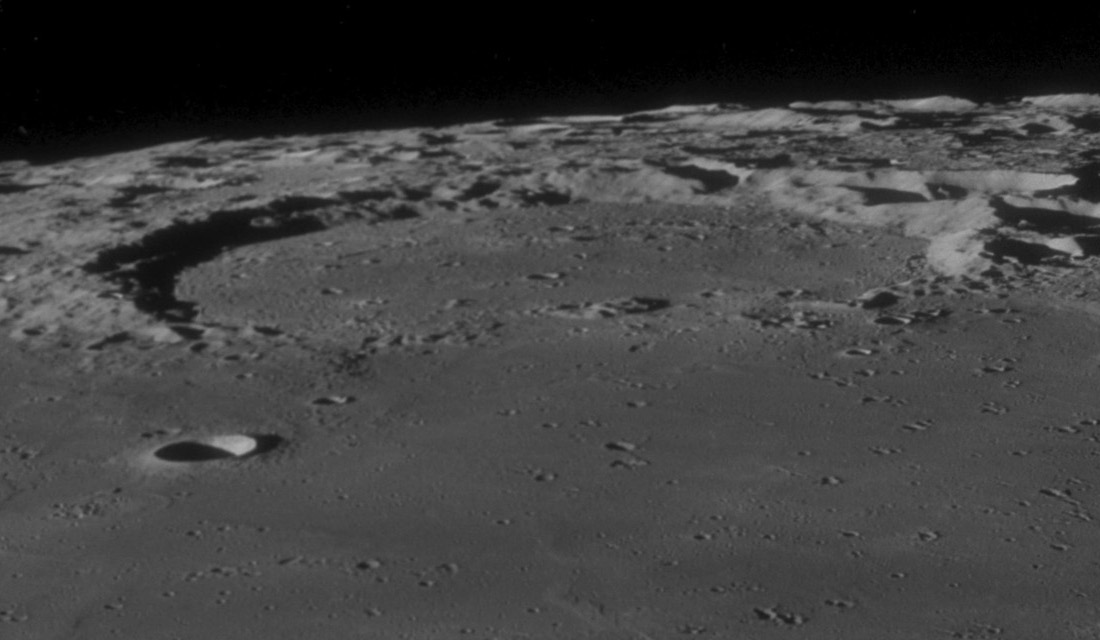Fracastorius (crater) on:
[Wikipedia]
[Google]
[Amazon]
Fracastorius is the
 By convention these features are identified on lunar maps by placing the letter on the side of the crater midpoint that is closest to Fracastorius.
By convention these features are identified on lunar maps by placing the letter on the side of the crater midpoint that is closest to Fracastorius.


lava
Lava is molten or partially molten rock ( magma) that has been expelled from the interior of a terrestrial planet (such as Earth) or a moon onto its surface. Lava may be erupted at a volcano or through a fracture in the crust, on land or ...
-flooded remnant of an ancient lunar impact crater
An impact crater is a circular depression in the surface of a solid astronomical object formed by the hypervelocity impact of a smaller object. In contrast to volcanic craters, which result from explosion or internal collapse, impact crater ...
located at the southern edge of Mare Nectaris
Mare Nectaris (Latin ''nectaris'', the "Sea of Nectar") is a small lunar mare or sea (a volcanic lava plain noticeably darker than the rest of the Moon's surface) located south of Mare Tranquillitatis southwest of Mare Fecunditatis, on the ne ...
. To the northwest of this formation lies the crater Beaumont, while to the northeast is Rosse Rosse is a surname. Notable people with the surname include:
*Eric Rosse, American record producer and composer
* Frederick Rosse (1867–1940), English composer
*Herman Rosse (1887–1965), Dutch-born American architect, painter, theatrical design ...
.
The northern wall of this crater is missing, with only mounds appearing in the lunar mare
The lunar maria (; singular: mare ) are large, dark, basaltic plains on Earth's Moon, formed by ancient asteroid impacts on the far side on the Moon that triggered volcanic activity on the opposite (near) side. They were dubbed , Latin for 'seas' ...
to mark the outline. The lava that formed Mare Nectaris
Mare Nectaris (Latin ''nectaris'', the "Sea of Nectar") is a small lunar mare or sea (a volcanic lava plain noticeably darker than the rest of the Moon's surface) located south of Mare Tranquillitatis southwest of Mare Fecunditatis, on the ne ...
also invaded this crater, so the structure now forms a bay-like extension. The remainder of the rim is heavily worn and covered in lesser impact craters, leaving little of the original rim intact. The maximum elevation of the rim is 2.4 km. The most prominent of these craters is Fractastorius D, which overlies a portion of the western rim.
Fracastorius has no central peak, but a long, slender rille
Rille (German for 'groove') is typically used to describe any of the long, narrow depressions in the surface of the Moon that resemble channels. The Latin term is ''rima'', plural ''rimae''. Typically, a rille can be several kilometers wi ...
runs across the middle of the floor in a generally east–west direction.
The crater commemorates the Italian scholar, astronomer and poet Girolamo Fracastoro, "Fracastorius" (1478‑1553).
Satellite craters
 By convention these features are identified on lunar maps by placing the letter on the side of the crater midpoint that is closest to Fracastorius.
By convention these features are identified on lunar maps by placing the letter on the side of the crater midpoint that is closest to Fracastorius.


References
* * * * * * * * * * * Impact craters on the Moon {{Craters on the Moon: C-F